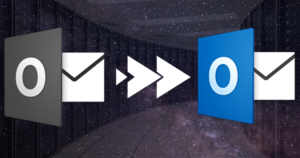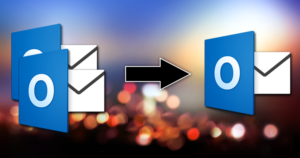Outlook is renowned and might be the best email client available today. The email client is perfect for tackling modern-day needs as it is laced with almost every feature required to compete in this competitive world. However, only a few users know that they can add shared mailbox to Outlook from Office 365, and only a few of them know how to add a shared mailbox in Outlook.
In this write-up, we’ll dive into adding Office 365’s shared mailbox into Outlook, how it can benefit your organization for better productivity, and why it is required. So, let’s start.
What is a shared mailbox?
You might know little about it if you’re an early Office 365 user. Still, I’m providing a brief overview of the Office 365 shared mailbox.
A shared mailbox allows the organization to maintain privacy and allows a group of people to send, receive, view, and monitor messages from an inbox. This feature comes in handy when a team is working on a project and needs to communicate with each other. This enables a team to ensure up-to-date and smooth communication on a specific project.
Now that you might have a clear idea of Office 365 shared mailboxes, you might be eager to add one to Outlook. But before diving into it, we’ll examine why a Shared mailbox is important.
What is the use of a Shared mailbox in Outlook?
Outlook offers several benefits to its users, including calendar, contact, and task management. However, the shared mailbox is one of the most common features that almost every enterprise requires.
When you add a shared mailbox to Outlook, our newly joined employee will adapt to your working culture and methodologies much more quickly. Through shared mailboxes, they can easily communicate and collaborate with other team members as fast as possible.
A shared mailbox promotes transparency, as every member can easily see the emails sent among the team members.
Ways to add a shared mailbox to Outlook manually
Many users nowadays have the same query: How to add a shared mailbox in Outlook. Most of them end up with the wrong process. But don’t worry—today, we’ll walk through two different methods for adding your shared mailbox to Outlook.
Way 1 to add a shared mailbox to Outlook
- Open Microsoft Outlook on your system. Before proceeding with the steps, make sure you have the latest version of Outlook installed.
- Now, from the ribbon bar, click on the File option at the top left of the screen.
- After that, click on the Account Setting option from the left pane again.
- A new wizard will open. Click on the Change option to add a new email address to your shared mailbox.
- Once you click on the change option, click on the More settings option, and then click Advanced.
- On the same wizard, click on the Add and provide the shared mailbox email address and password to log in to Outlook. ‘
- Once done with all the above steps, click on the Finish button.
- Finally, close and restart your Outlook to check whether the shared mailbox is appearing.
So, it is simple to add a shared mailbox in Outlook. If the process now works for you, there might be some steps you’re following wrong. Don’t worry; we have another option for you.
Way 2 for how to add a shared mailbox to Outlook
- Open Outlook and log in to your account.
- Now, right-click on the Account Name option. ‘
- Click on the Add shared folder or mailbox option from the dropdown menu.
- Enter your shared mailbox’s email address and password to add to Outlook.
- Once you provided the login credentials, click on the Add button.
- Finally, restart Outlook and verify whether your shared mailbox has been added to Outlook.
So these are the two ways to add shared mailbox to Outlook, I hope one of these methods will surely work for you. But the problem is that some user doesn’t want to continue their Office 365 subscription and just want to move their shared mailbox data from Office 365 to Outlook. For these users, the only way to add a shared mailbox to Outlook is by utilizing a third-party tool.
There are several third-party tools in the market but the only tool that is used and recommended by Microsoft MVPs and administrators is the Shoviv Office 365 Backup and Restore Tool.
As the name suggests, the tool is specially coded to backup Office 365 mailboxes, including shared mailboxes. The tool is very easy to use, and even first-time users can easily utilize it to add shared mailboxes to Outlook.
Conclusion
Outlook is single-headedly dominating the email niche, and by adding a shared mailbox to it, users can significantly boost their productivity. However, the problem is that only a few know the process of adding the shared mailbox into Outlook. By going through the blog, I hope after going through the blog, you’ll be able to add a shared mailbox to Outlook. The manual method mentioned in this blog is super easy, and even a novice user can easily go through the process. If you’re one of those users who do not want to continue their Office 365 subscription but still need access to shared mailbox data, then the Shoviv Office 365 Backup and Restore tool is the best solution for you.
Related Articles
- How Can We Find Missing Folders in Microsoft Outlook?
- How to Find PST File Location & Move it to Another Computer?
- How to Find Outlook OST File Location in Microsoft Windows?
- How do you import emails into Outlook 365 Desktop App?
- What is Cached Exchange Mode in Outlook?
- Ways to Fix Emails Disappeared From Outlook Inbox Issue?
Frequently Asked Question
A shared mailbox is a feature within Outlook that allows a group of people within an organization to send, read, and edit emails/messages. It makes team communication much easier.
A shared mailbox is a great way for new employees to collaborate on a specific project with any department, including development, marketing, etc.
It totally depends on you whether you want to use Office 365 or not. We only recommend using the Shoviv Office 365 Backup and Restore Tool to secure or import your data into PST format and store them on your hard disk.
- Why is My Outlook Not Displaying Email Body Content? - February 24, 2025
- Why My Outlook Calendar Disappeared From Navigation Pane? - February 3, 2025
- Gmail Archive vs. Delete: Which Should You Choose & When? - January 20, 2025


